It’s not about participation – it’s about co-creation
Insights from a grassland restoration Real-World Laboratory 1
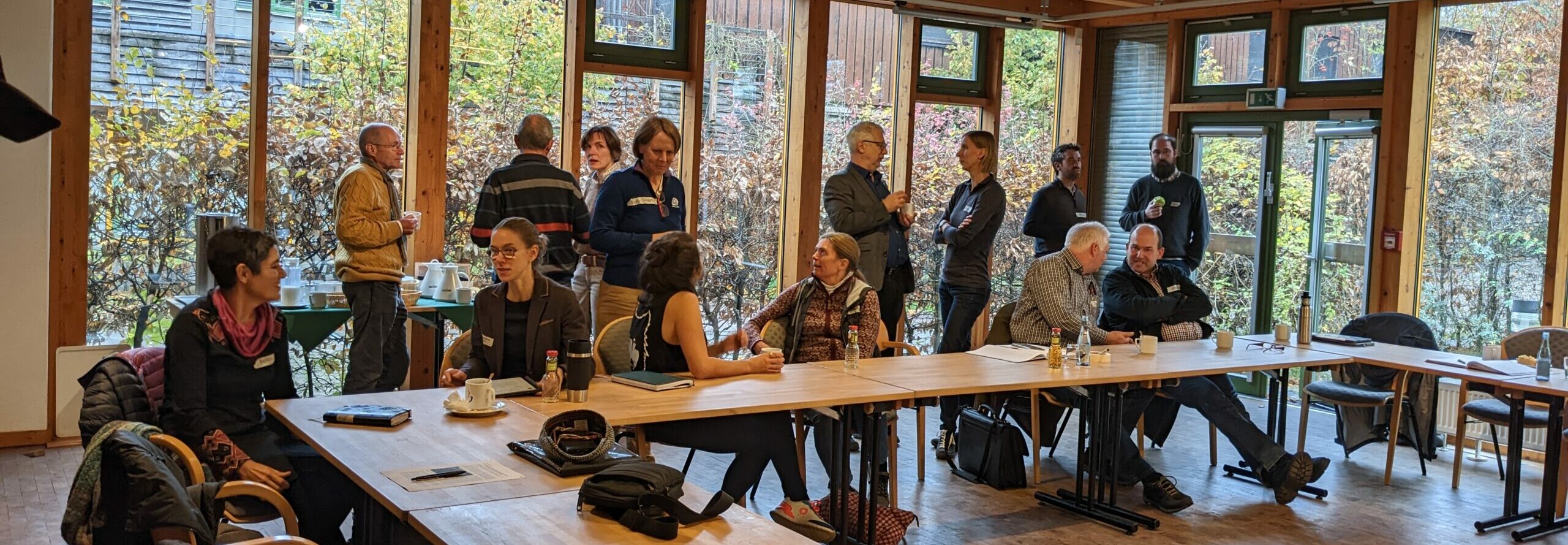
During the current UN Decade on Ecosystem Restoration (2021–2030) the question of how effective restoration is and what leads to success reached centre stage. The project Grassworks which aims to understand what leads to successful grassland restoration from both ecological and social perspectives held a kick-off event for the initiation of a transformation process in a Real-World Laboratory with local stakeholders on the 4th of November 2022, in the Otter Centre Hankensbüttel (district of Gifhorn, Lower Saxony, Germany).
That the biodiversity crisis is a problem is likely not new to many readers, but the role of grasslands in this is often less well-known. Although traditionally managed grasslands are among the most species-rich habitats in central Europe1 and provide a variety of important ecosystem services2,3, their conservation risk status is the highest compared to other ecosystem types as they are very often converted to other land uses and are less well protected than tropical forests.4 This is also strongly evident in Germany, with a progressive loss of grassland areas and an almost consistently negative conservation status of grassland habitats.5 As a result, the role of grassland restoration is becoming more and more relevant.
The project Grassworks is specifically concerned with how grassland restoration can be carried out successfully and sustainably in Germany, considering ecological, social, political and economic factors. In this context, the project examines the success and failure of the restoration of various grassland sites and their underlying factors. Also, it is setting up three Real-World Laboratories (RWL) to initiate transformation processes in grassland restoration with local stakeholders. Within the framework of the latter, the introductory event for the start of the Real-World Lab North took place in the Otter Centre Hankensbüttel. Representatives of the Lower Saxony Chamber of Agriculture, the Lower Nature Conservation Authority, the Landvolk, farmers from the district of Gifhorn, staff members of the Otter Centre, as well as professors, research associates, and PhD students of the Leuphana University and the Anhalt University of Applied Sciences participated.
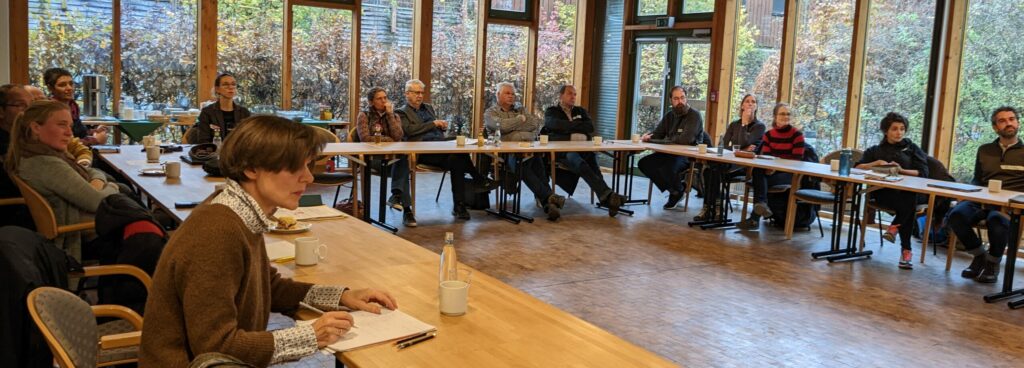
Within the framework of the Real-World Laboratory, a series of workshops will take place in which identified stakeholders will learn to understand each other and become more familiar with key topics in ecological and human-nature relationships in the context of grasslands. This should help them to identify leverage points and jointly plan measures for grassland restoration in their region. These measures are then to be implemented together and will be accompanied by a joint exchange, monitoring and reflection. “It’s not about participation, it’s about co-creation,” describes Lukas Kuhn, Leuphana PhD candidate, to all the stakeholders who were present. Prof. Vicky Temperton, head of the project Grassworks, and Dr. Miguel Cebrián-Piqueras, coordinator of the Real-World Labs also agreed that this is “about a structure that can be filled — by all who participate.” The goal is to create a network in which people can work together on the formulated goals. There are no strict guidelines. The project thrives on its experimental character, openness, active participation, the communication of values, and the sharing of all participants’ opinions, perspectives, and knowledge. The role of the scientists is to assist, support and moderate. In this way, stakeholders’ self-determined actions can foster the feeling of being able to achieve something — under one’s own direction. Especially in light of the otherwise often restrictive bureaucracy and regulations, this can be a very valuable experience. In the end, the goal is to follow a bottom-up process: starting with the stakeholders, the processes initiated aim to have an impact, potentially all the way up to the national level.
The first step in this endeavour was already taken during the information event. There were several contributions from the group, for example, discussing factors that the respective stakeholders consider important. Very early on in the exchange, the question of economic incentives for farmers and land managers to take the step to restore and manage grasslands was raised. Also, there was a discussion of the role of other values, such as appreciation and a changing incentives and carbon credits landscape in a rapidly changing world of climate change, biodiversity and social crises. Another contribution addressed the perceived lack of public awareness of the importance of grasslands, both in terms of material, but also immaterial cultural benefits. This included a story about a strong connection to meadows from picking cuckooflower (Cardamine pratensis, Wiesenschaumkraut in German) and cowslips (Primula spec., Schlüsselbumen) for one’s mother, and contrasting this with the current situation: firstly, it would be hard to find these two species in most current meadows, and if one did pick them, it would be a criminal act. This puts the shifting biodiversity baselines we are dealing with in our current world into a clear perspective. As Lunja Ernst, a staff member of the Otter Centre, noted during this exchange: “We’re already in the middle of it.” Alina Twerski, a research associate at Leuphana, agrees, adding: “Now it’s up to us in which direction this goes.”
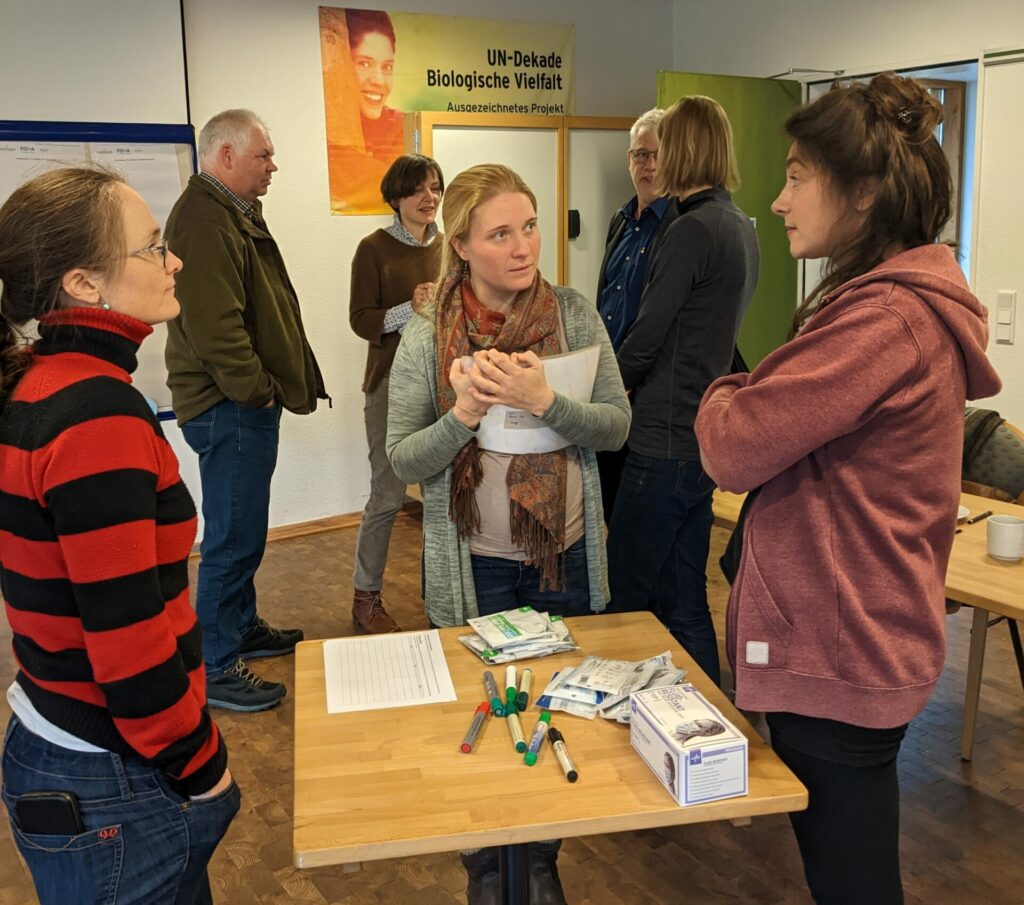 © Lea Pöllmann
© Lea PöllmannAt the end of the event, participants were encouraged to specify their role in this process, considering the way forward: How can I be involved? What do I want to contribute? Where do I see my role? The participants took pen and paper to collect these inputs and gathered their thoughts on this. The results ranged from taking responsibility, creating value through direct marketing and creating a species-rich floral offer, to establishing contacts, networking, and multiplier functions. Overall, the Real-World Laboratory component of the project seems promising, or to put it in the words of one of our participants: “Looking forward to colourful meadows!”
This research is funded by BMBF (Federal Ministry of Education and Research in Germany), under the Research for Biodiversity Conservation Programme (FEdA). Project period: Nov. 2021 — Oct. 2024
References
- Temperton (2013): Mit Wissenschaft zurück zu artenreichen Wiesen – Die Renaturierung von Graslandbeständen als komplexes System. In: Beck (ed.): Die Vielfalt des Lebens: Wie hoch, wie komplex, warum? Wiley VCH.↩
- Bengtsson, J., Bullock, J.M., Egoh, B., Everson, C., Everson, T., O’Connor, T., O’Farrell, P. J., Smith, H. G., & Lindborg, R. (2019). Grasslands – more important for ecosystem services than you might think. Ecosphere 10(2): e02582. doi: 10.1002/ecs2.2582.↩
- Schils, R. L., Bufe, C., Rhymer, C. M., Francksen, R. M., Klaus, V. H., Abdalla, M., … & Price, J. P. N. (2022). Permanent grasslands in Europe: Land use change and intensification decrease their multifunctionality. Agriculture, Ecosystems & Environment, 330, 107891.↩
- Hoekstra, J. M., Boucher, T. M., Ricketts, T. H., & Roberts, C. (2005). Confronting a biome crisis: global disparities of habitat loss and protection. Ecology letters, 8(1), 23-29. doi: 10.1111/j.1461-0248.2004.00686.x.↩
- BfN (Federal Agency for Nature Conservation) (ed.) (2014). Grünland-Report – Alles im Grünen Bereich?.↩
Lea Pöllmann
I am studying environmental and sustainability sciences with a focus on ecology and nature conservation at the Leuphana University of Lüneburg. I am particularly interested in ecosystem functions and interactions and how we can connect them with our social systems in a sustainable and mutually beneficial way. At Grassworks, I mainly work in outreach and am writing my thesis in the ecological research component.
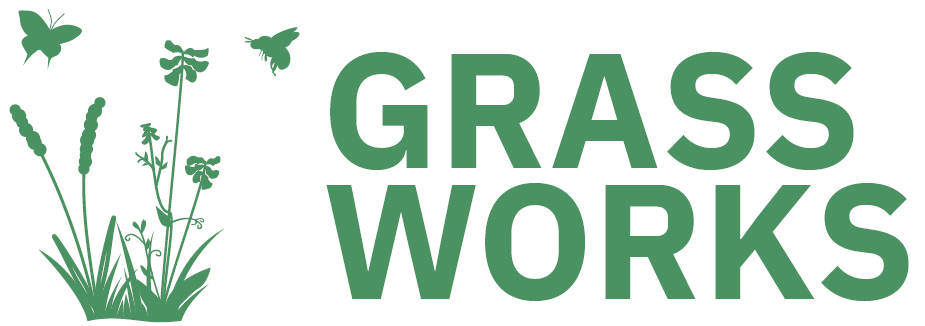

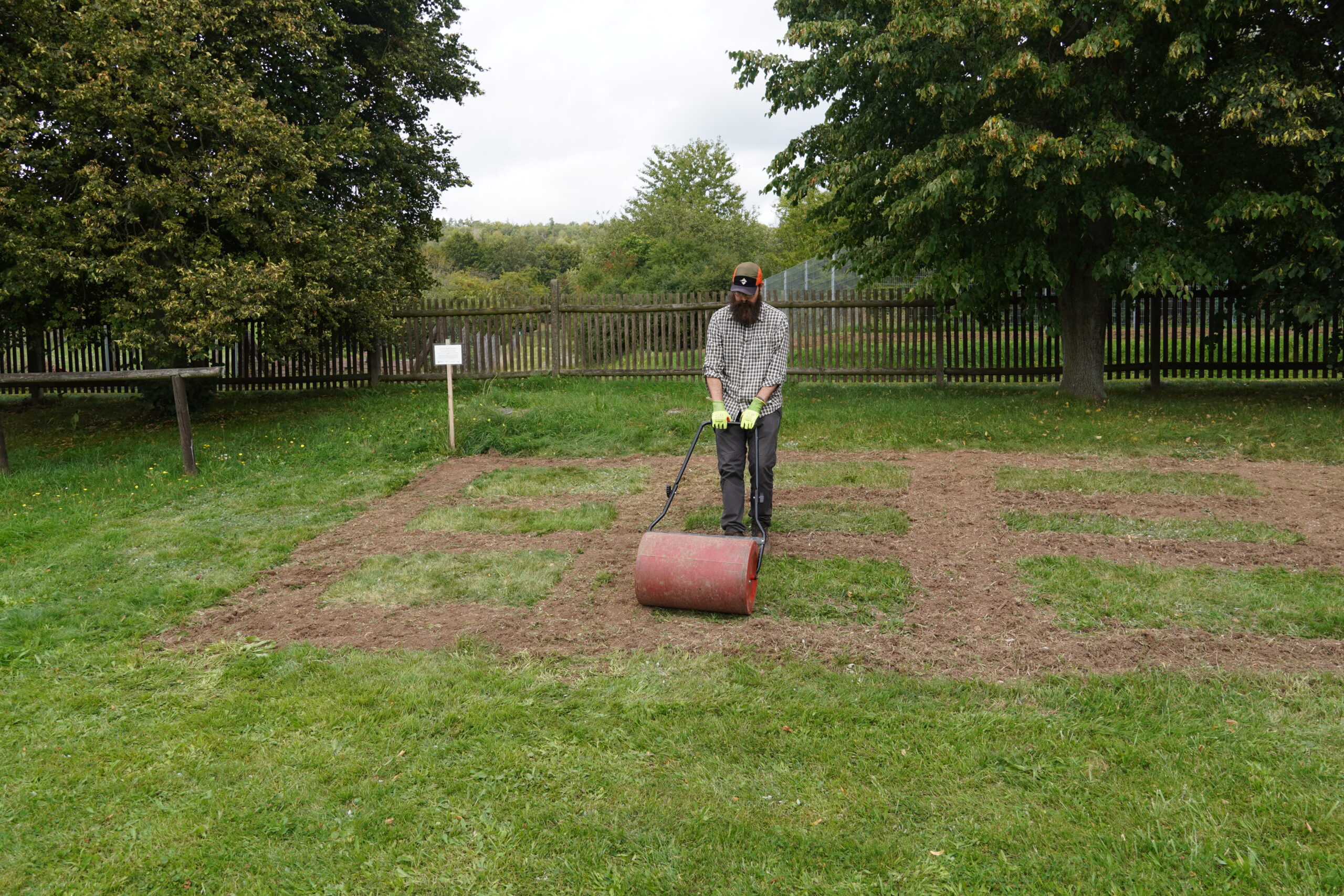
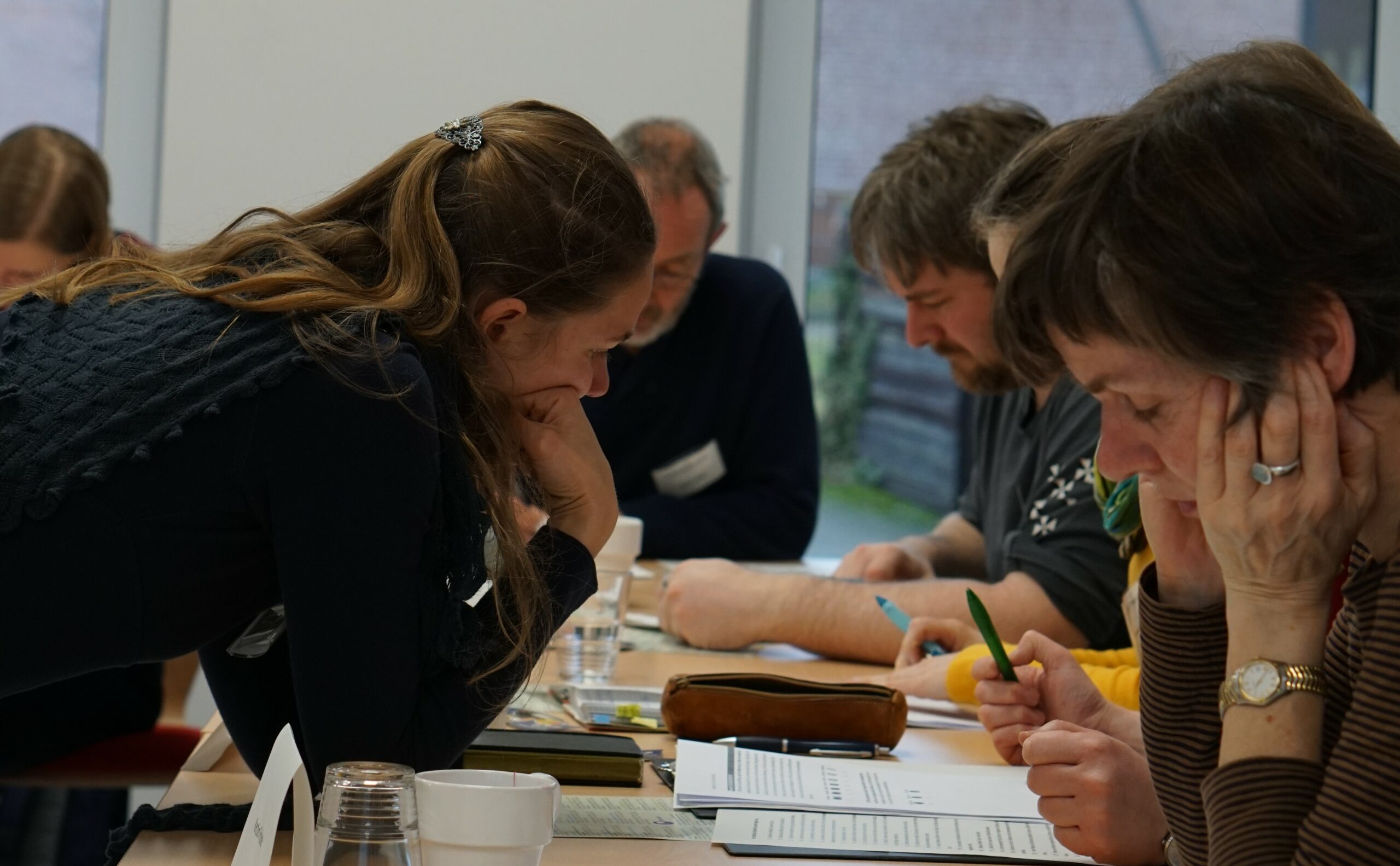
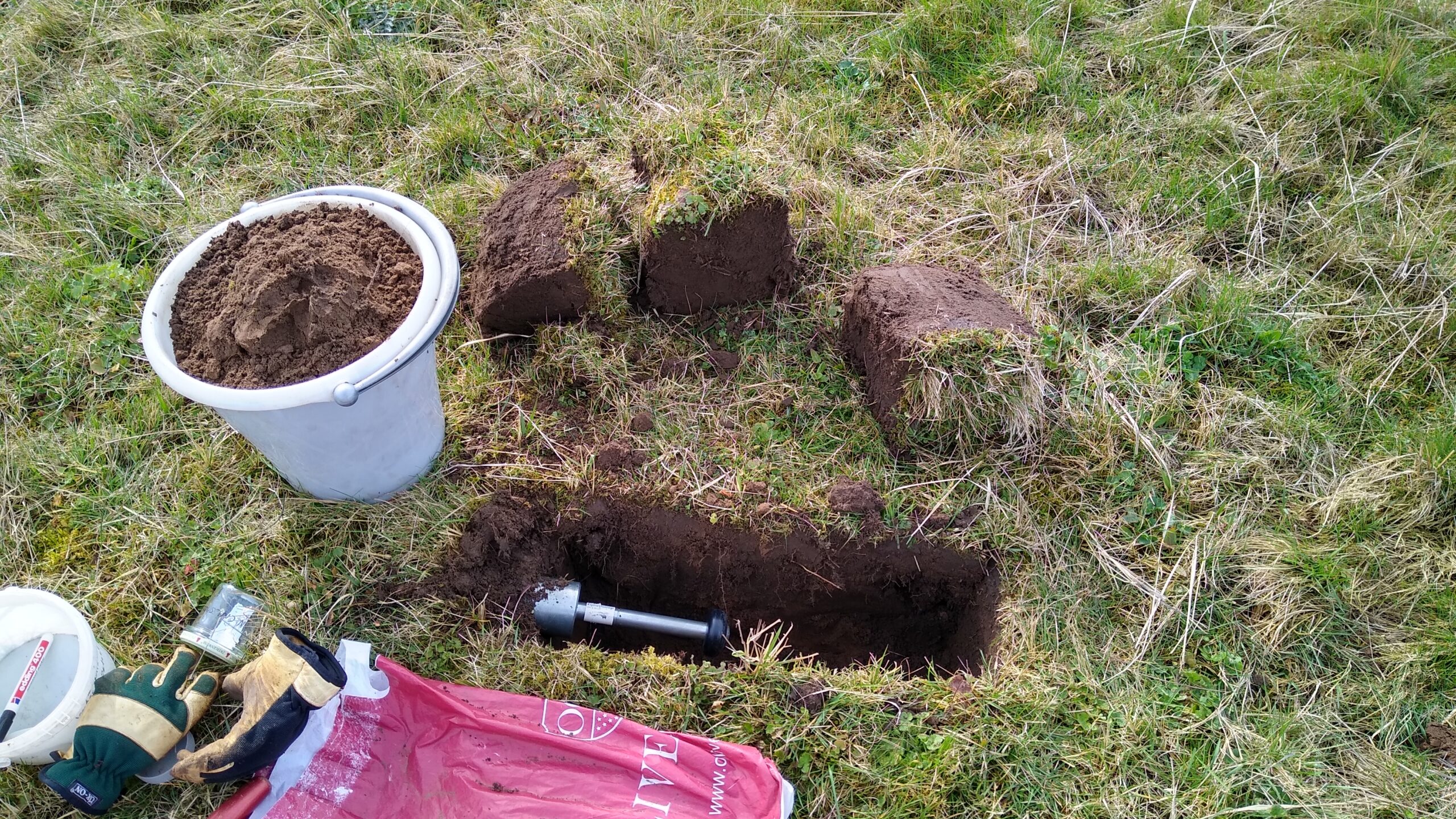
Leave a Reply